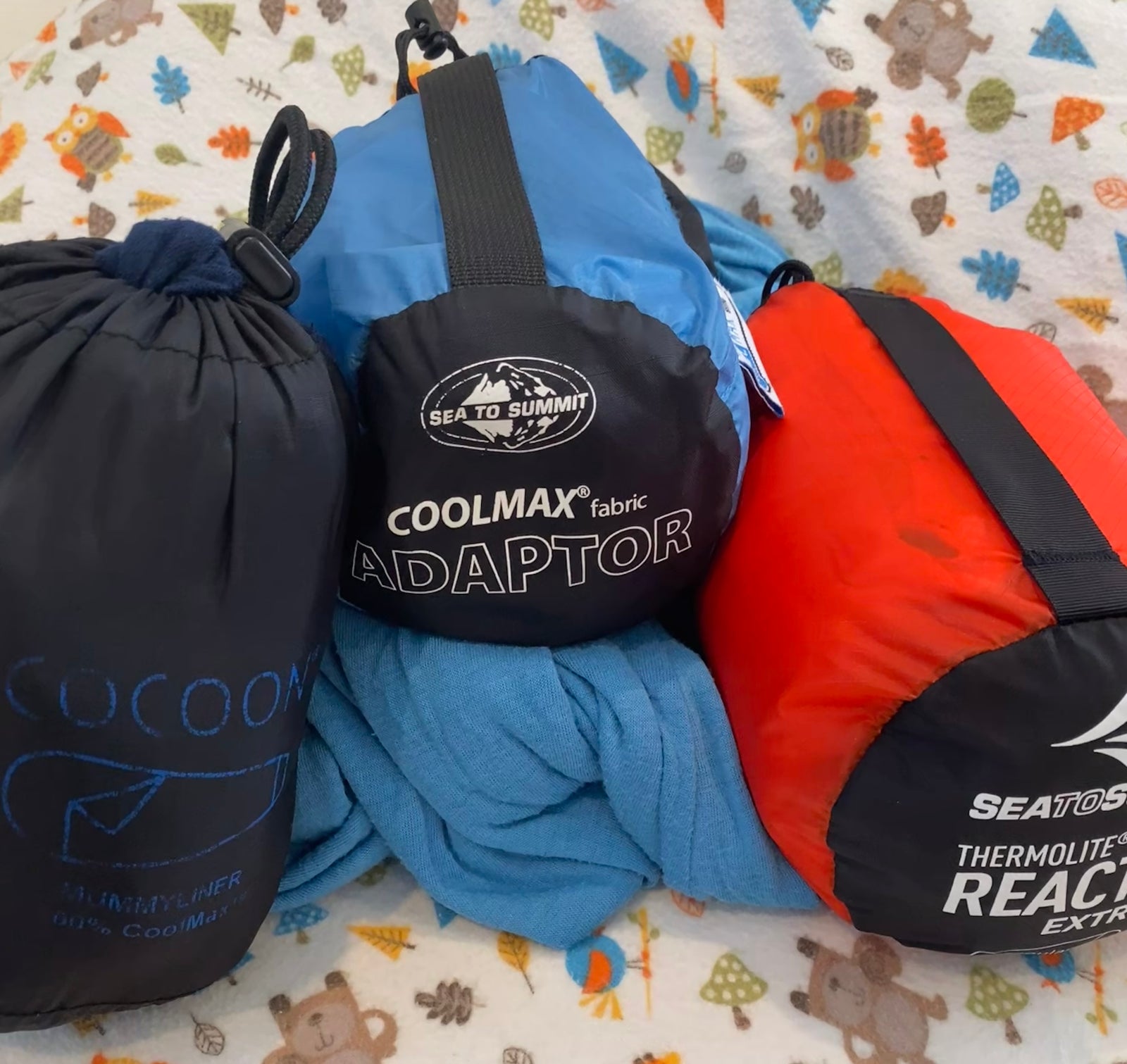Sleeping Bag Liners for Plus Size Backpackers

Finding a comfortable sleeping system is the Holy Grail of backpacking, if you ask me.
This is part 3 in a 5 series on how to build out the perfect sleep system for you.
But first... what is a sleep system.
A backpacking sleep system consists of the same backpacking gear layers you're already familiar with:
- base layer (clothing to sleep in)
- mid layer (sleeping bag liner)
- insulation (bag and mat)
- outer layer (shelter)
- foot protection (socks)
- head protection (pillow/cushion and a hat)
We covered both parts of the insulation layer here and here. Now, let's talk about your mid layer aka the sleeping bag liner.
What is a Sleeping Bag Liner?
Sleeping bag liners are probably the most overlooked and least talked about part of a sleep system. And definitely the most underrated. You can think of a sleeping bag liner as a lightweight thin sheet in the shape of your sleeping bag. In fact, sleeping bag liners serve the same purpose as sheets. And, while top sheets are on their way out, we think sleeping bag liners never go out of style.
Sleeping bag liners protect your bag from body oils as well as dirt and grime from a hard day on the trail. This means you'll need to wash your bag less. Which is great news for protecting your bag and the delicate bag filling. Another bonus of having a liner? They can add between 5° - 20°F of warmth to your sleep system for relatively little added weight!
There are 5 common materials you'll find liners made from (and one bonus type of liner):
- Cotton
- Silk
- Microfleece and fleece
- Synthetic
- Wool
- Insulated*
Finding the Perfect Mid Layer
Let's dive in.
Cotton: as a general rule, we recommend against cotton on the trail, especially for anything that's important for your safety and warmth. I listed these first, because that's the only mention cotton is going to get here. For us, hard pass.
Silk: lightweight and pretty versatile in different weather conditions, nearly zero stretch. If you want a touch of luxury in your tent and you don't mind the lack of stretch, this just might be for you
Microfleece and fleece: warmer, bulkier, and heavier, minimal stretch. If you've got a bag you're comfortable in during spring/fall with no liner and you want to stretch it into cooler temps, you might give these bags a try.
Synthetic: These tend to to have the most stretch. Not as light as silk, but similar in weight and bulk. They usually come at a slightly lower price point than silk.
Wool: All the pros and cons of wool. Wool liners are similar to silk and synthetic in weight and bulk. Most often you'll see these liners made from merino wool (whew) as it's risen to the top as the softest variety on the market.
Insulated: the most expensive of the pack. While "insulated" is obviously not a material, insulated liners fill a unique need, so they get a special call out on our list. These are the warmest, bulkiest, and heaviest option (and most expensive!). They proport to add up to 25° of warmth to your sleeping situation. If you already winter in your bag, but need an extra 20-25° of warmth, look here.
When shopping for your liner, consider your needs and what can give vs what can't. As always, you're balancing comfort, size (bulk and weight), and budget.
Personally, I've been happy with a rectangular synthetic liner. Though, I have opened the bottom since I like to have a foot out of the bag at night.
Final Thoughts
I've never seen sizes on sleeping bag liners. Be sure to check the dimensions of the liner you look at before purchasing. If you're handy with a sewing machine, combining two liners to get a custom size bag is a very simple and straightforward DIY.
Happy Hiking!








